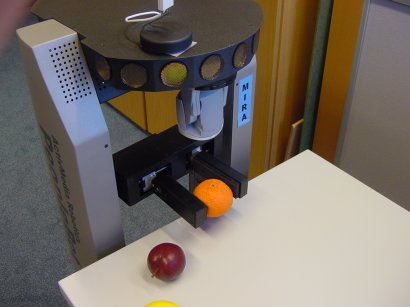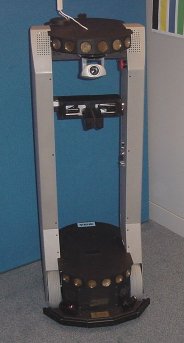| MirrorBot |
| Project Description |
MirrorBot:
Biomimetic multimodal learning in a mirror neuron-based robot
A project between the University
of Sunderland, MCR at Cambridge, University of Parma, INRIA at
Nancy and University of Ulm.
3 Year
EU-IST-FET project Part of
the EU Neuro-IT Network of Excellence
| Prof.
Stefan Wermter Chair of Intelligent Systems Hybrid Intelligent Systems School of Computing and Technology University of Sunderland |
Prof Friedemann Pulvermüller Medical Research Council Cognition and Brain Sciences Unit Cambridge |
| Prof. Giacomo Rizzolatti Institute of Neurophysiology University of Parma |
Dr. Frédéric
Alexandre CORTEX team INRIA Lorraine/LORIA-CNRS Nancy |
| Prof.
Guenther Palm Neuroinformatics University of Ulm |
 |
|||
Recently new theories and experiments in neuroscience have indicated that a biological and neuroscience-oriented approach for multimodal processing will lead to new life-like perception action systems. In particular, concepts from mirror neurons suggest that own actions, observed actions and language are very much interrelated since the same mirror neurons fire at the same time based on experiments with monkeys and humans. Mirror neuron areas correspond to cortical areas which are related to human language centres (e.g. Broca region) and could provide a cortical substrate for the integration of vision, language and action. This project MirrorBot will develop and study emerging embodied representations based on mirror neurons.We will develop new techniques including cell assemblies, associative neural networks, and Hebbian-type learning in order to associate vision, language and motor concepts. We develop biomimetic multimodal learning and language instruction in a robot to investigate the task of searching for objects. |
|||
 |
 |
||